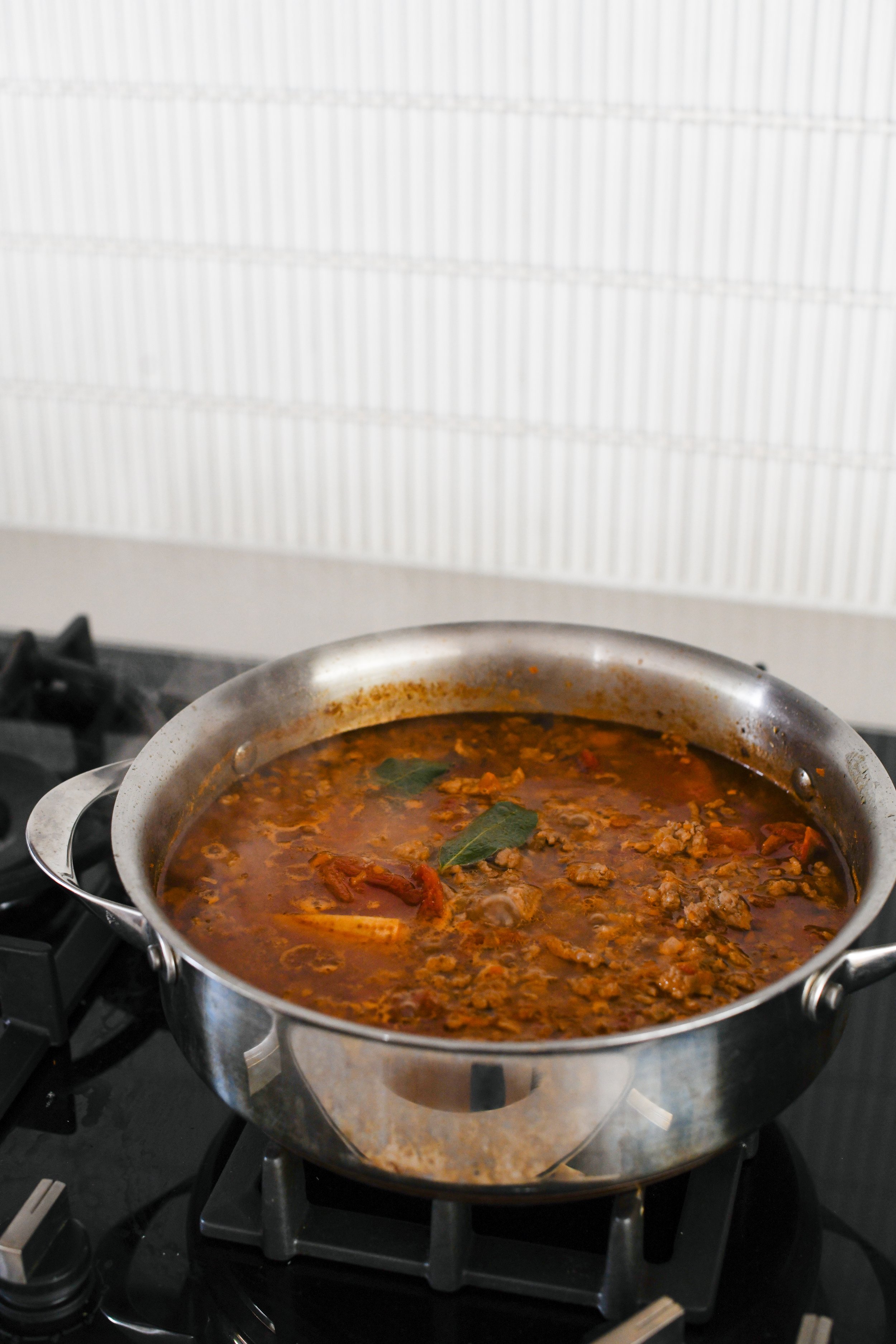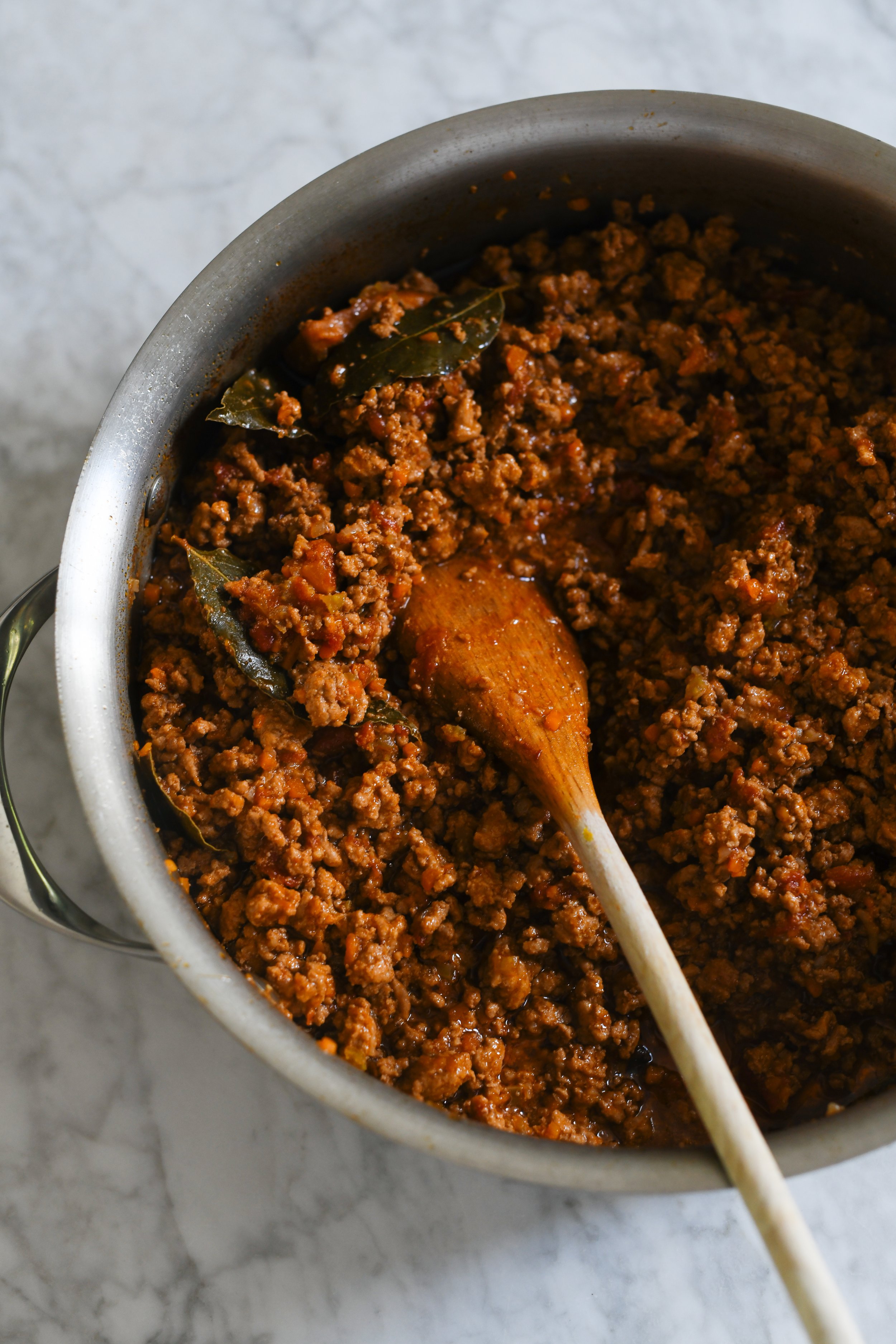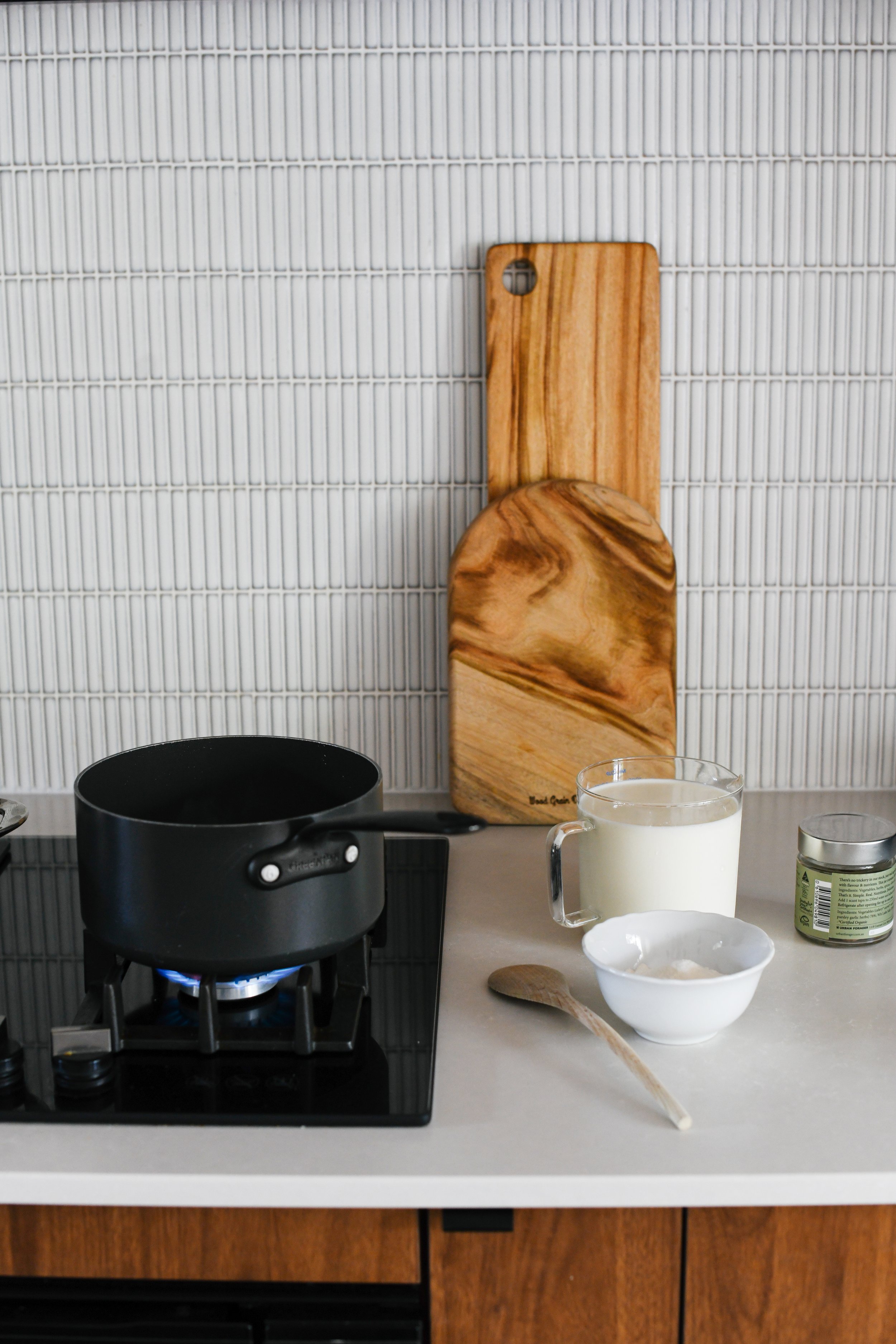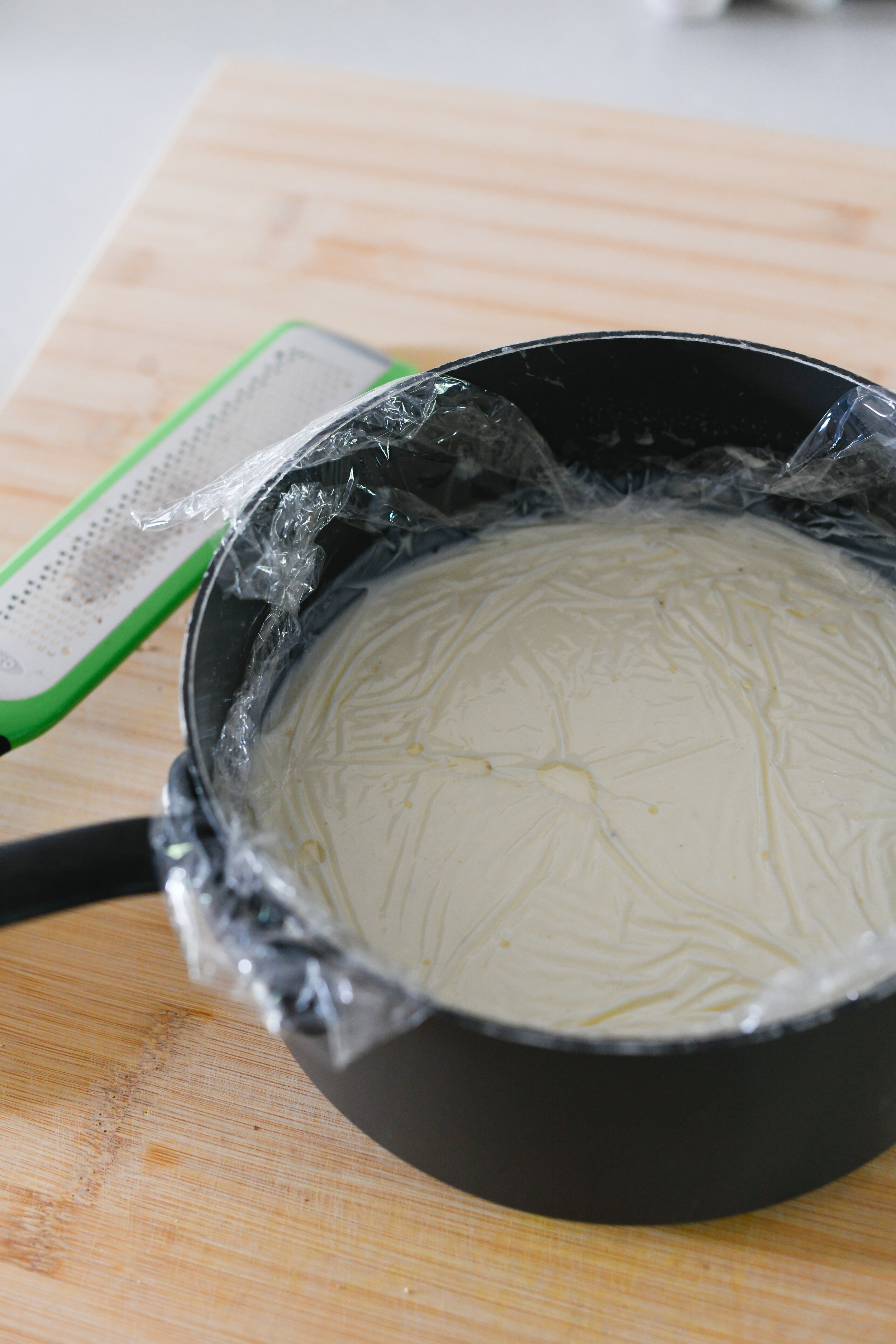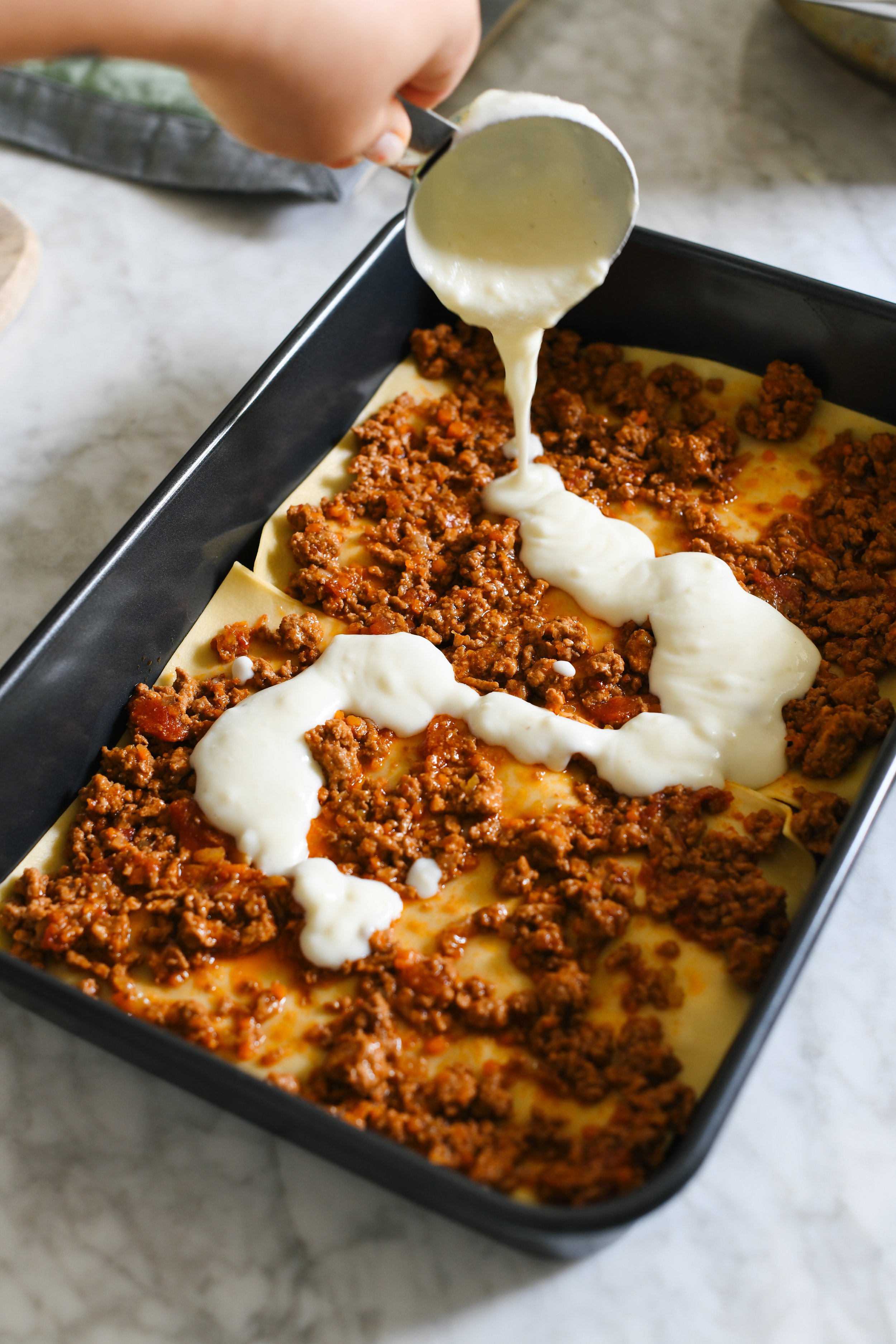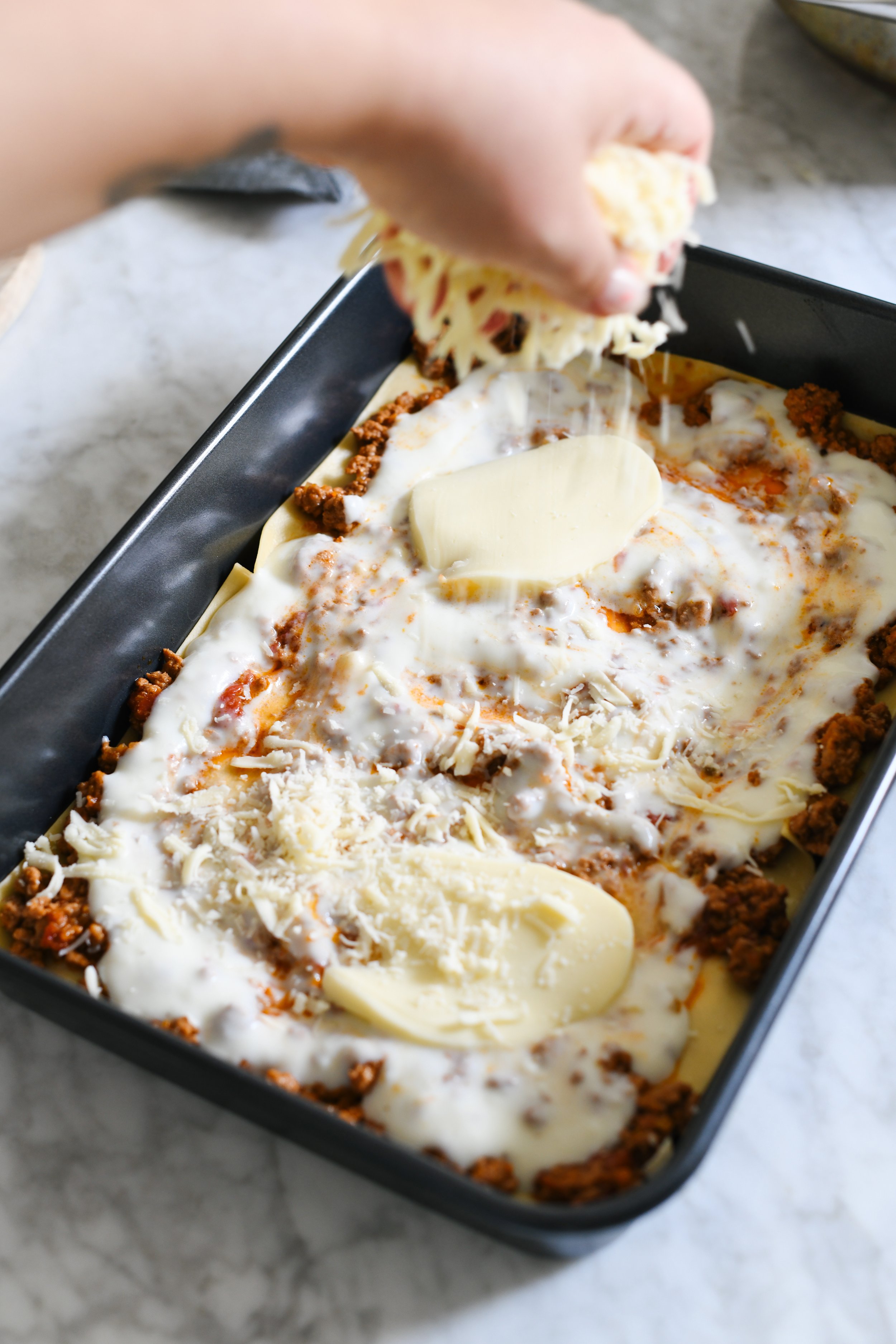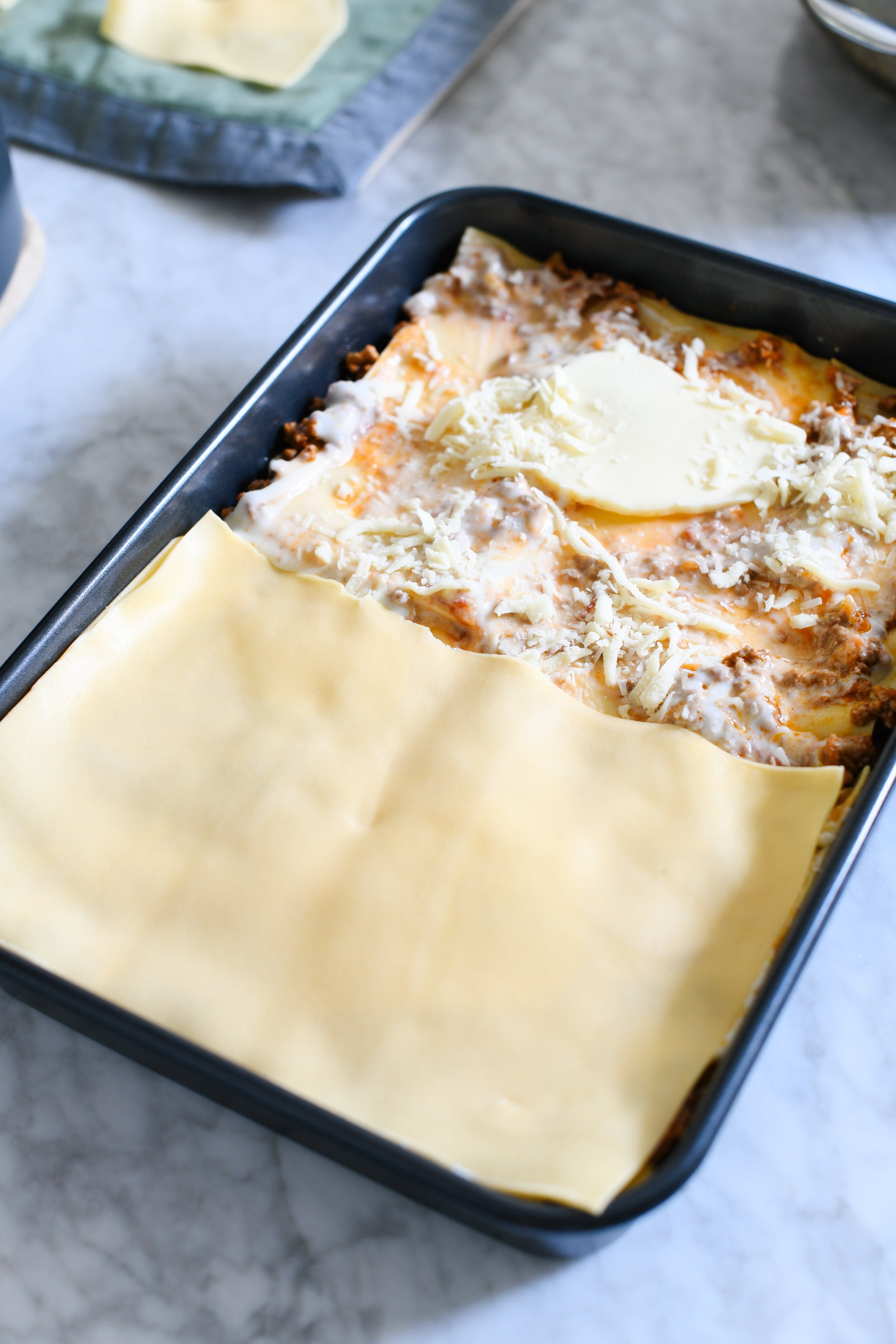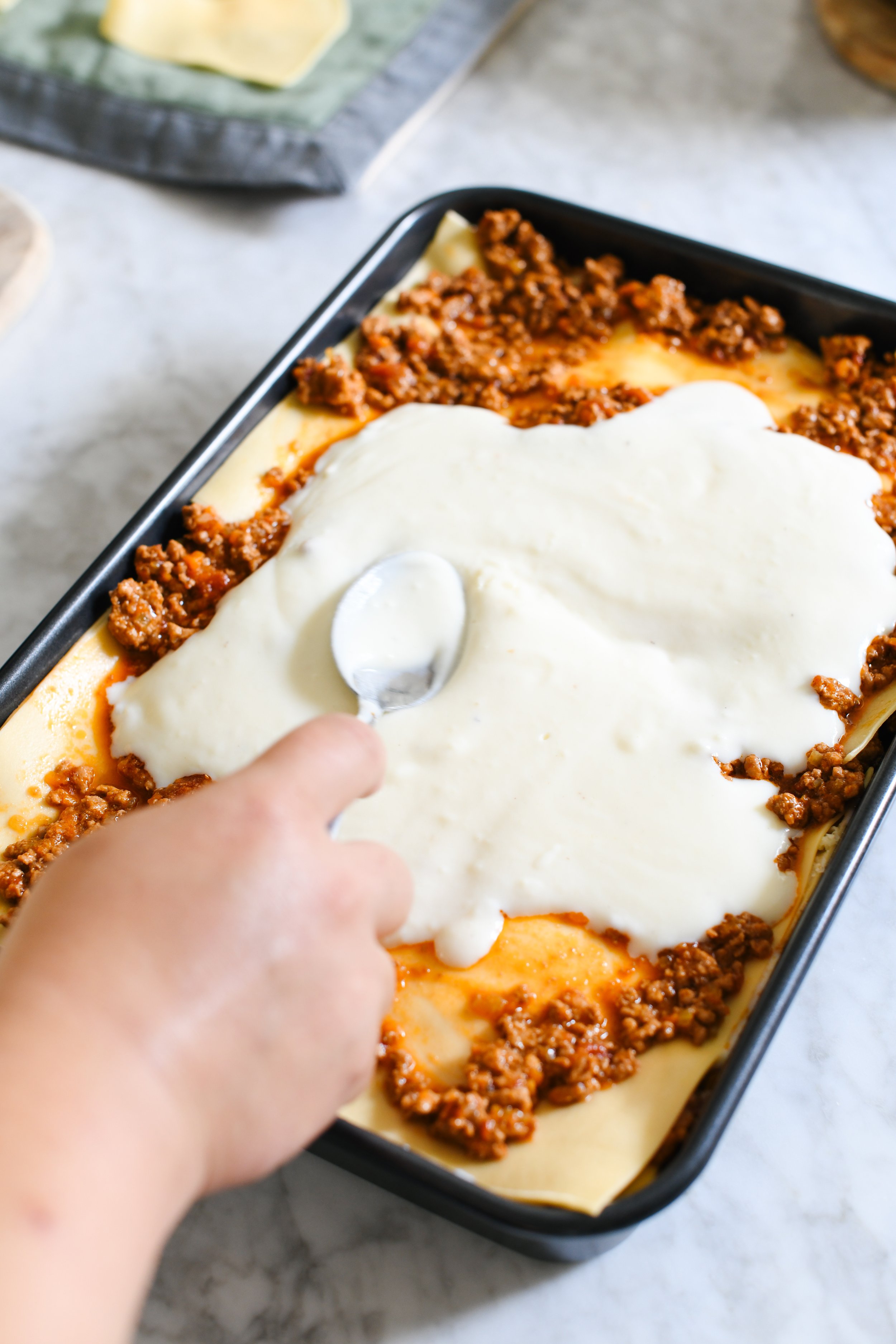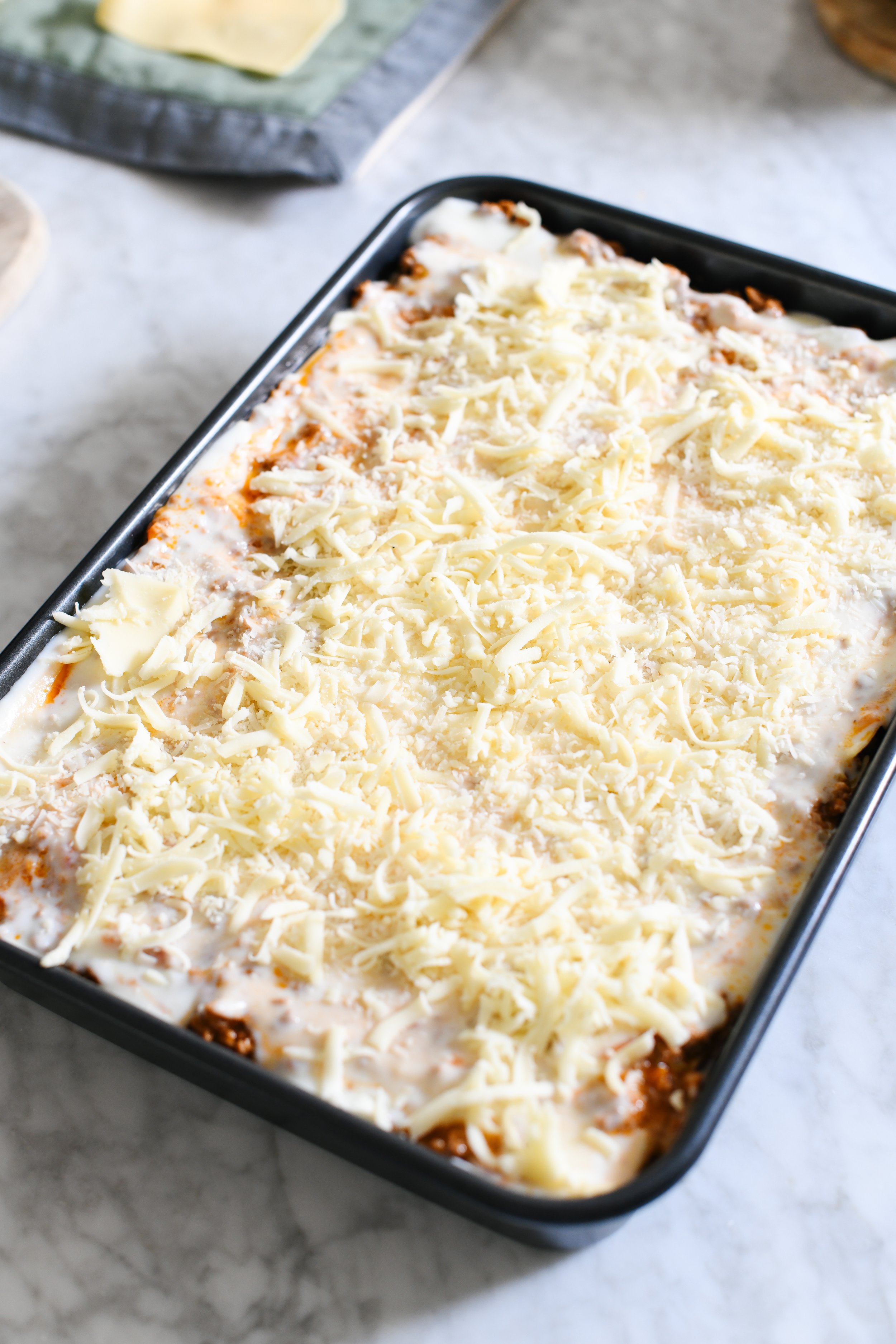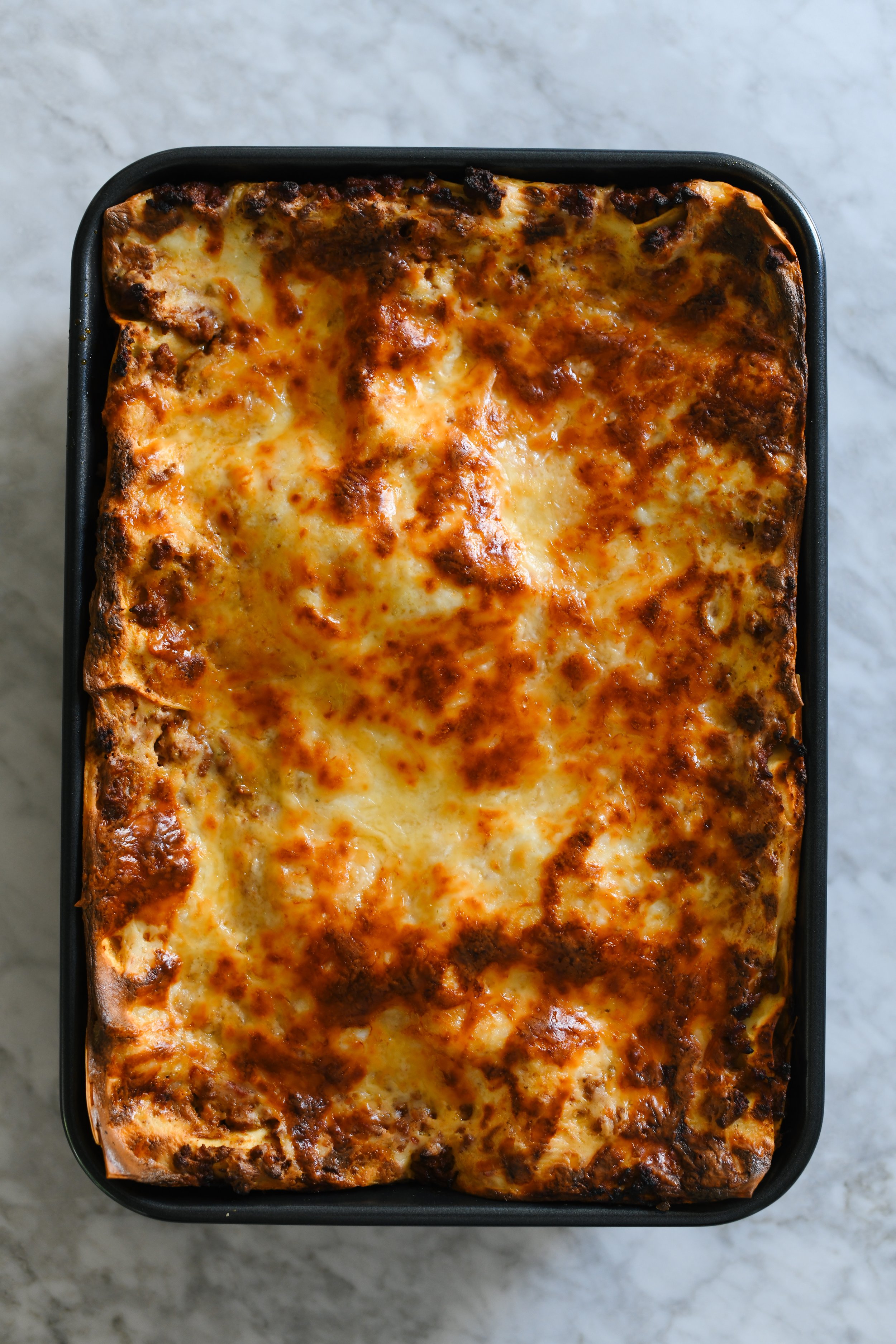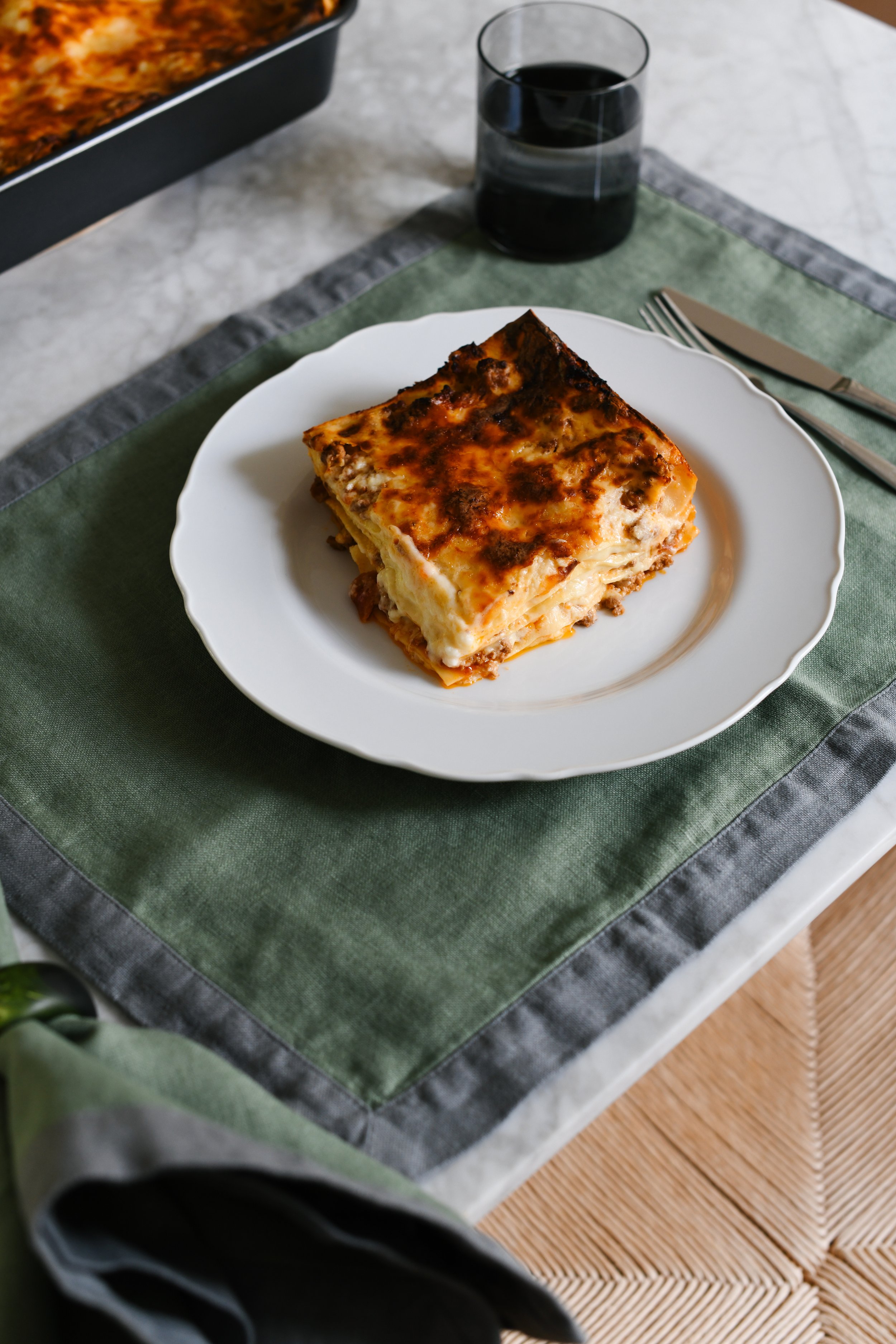Just a Classic Lasagne
Lasagne is one of those things that I usually decide to dedicate a Sunday to making. It’s one of my favourite things to intuitively cook - never following a recipe, just following my nose. A simple ragu, a classic béchamel and beautifully golden sheets of fresh egg pasta. What’s not to love about it? Perhaps the fact it is quite laborious and requires a few hours to make… but that aside! It’s a divine dish and dare I say it, possibly the best baked pasta dish one can enjoy?
I have settled on this recipe as my go-to for a classic lasagne. It does not involve a proper, traditional bolognese ragu but rather, a classic veal/pork ragu that relies on slightly fewer ingredients and can be cooked in a little less time if you’re in a pinch. Basically, everything can be bought from your supermarket - no special deli for mortadella and other such things required.
The best way to approach making lasagne from scratch is to work in components and get things ready ahead of time. The ragu can be made well in advance, as can the béchamel. Pasta equally can be made and cut earlier in the day with just the parboil and assembly left to do when the time comes. However you choose to approach it, just make sure you accept the fact it’s a fair amount of work. So with that being said, if you’re looking for something quick, this is not the recipe for you.
Classic Lasagne
Serves 6 - makes one 30cm pan
Ingredients
Pasta
1x batch of my Master Pasta Dough
Veal and Pork Ragu
4 tbsp extra virgin olive oil
1 brown onion, finely diced (equating to roughly 1 cup)
2 celery sticks, finely diced (equating to roughly 1/2 cup)
1-2 medium-large carrots, finely diced (equating to roughly 1 cup)
4 garlic cloves, slightly crushed
1kg veal/beef and pork mince (50/50)
200ml whole milk
2 tbsp tomato paste/puree
200ml red wine
2 x 400g tins of whole, peeled tomatoes - drained of their juices
400ml beef stock
3-4 bay leaves
Parmesan rind (if you have one, but optional!)
Besciamella (béchamel) and cheese for assembly
100g unsalted butter
100g flour - tipo 00 or all-purpose
1200ml whole milk
Fresh nutmeg (ground if you can’t find fresh!) - optional
Low hydration mozzarella (the melty kind - not buffalo) - a couple of big handfuls once grated
Parmigiano Reggiano - a couple of big handfuls once grated
Method
Pasta
Make the pasta dough.
Once rested, divide the dough into four pieces. Work with one at a time (keeping the rest covered to prevent them from drying out) - flatten the piece with your hand or a rolling pin before passing it through the thickest setting on your pasta machine. Fold the edges in to create a neat rectangle that fits the width of your pasta machine, and run it through the thickest setting again until your dough is uniform in shape
Continue passing your dough through the machine, working through each thickness setting until you get to setting 6 or 7, depending on your preference for thickness. I like to go with setting 6, personally.
Use your baking dish as a measuring guide and cut the rolled sheets of pasta into rectangles that will fit the base on the tin - I find I need two rectangles per layer for a 30cm pan. You’ll want at least 10 sheets to be able to create 5 pasta layers.
Re-roll any scraps to avoid wastage, and set your cut lasagne sheets aside, covered with a clean tea towel.
Veal and Pork Ragu
Finely dice the carrot, celery and onion. Smash the garlic cloves.
Heat olive oil in a large saucepan and gently sauté the veg for around 10 minutes before adding the garlic cloves and cook until fragrant.
Crumble in the veal and pork mince and use a whisk to help break it up in the pan. Salt generously.
The meat will release its juices - let it reduce, then add the milk and again allow this to almost entirely reduce. This will take some time - don’t rush it - stir occasionally.
Next make a space in the pan and add the tomato paste/purée - allow it to cook out for a minute or so, then tip in the red wine - reduce by 2/3.
Finally, add the tinned tomatoes (remember to strain them from the juice), beef stock, a few bay leaves and a parmesan rind if you have one.
Bring to a boil, then cover and simmer for around 2-3 hours, stirring occasionally, until the liquid has reduced and you’re left with a luscious ragu. If you find your ragu is drying out, add a splash of water/beef stock as needed. You don’t want this to be crumbly and dry, it should still be moist and have nice movement in the pan.
Discard the bay and Parmigiano rind and set aside until you’re ready to assemble your lasagne.
Besciamella (béchamel)
Melt the butter in a saucepan and whisk in the flour until a roux forms (a paste). Allow this to cook for a good 2-3 minutes so as to “cook out” the flour.
Add the milk - I do this cold - whisking continuously until it’s combined with the roux, then over a gentle heat allow this to cook and thicken, stirring often (this is important).
To know when it’s the right thickness and consistency, coat the back of a wooden spoon with the besciamella and draw a finger through the sauce - it should leave a clean parting. I try not to take it too far as it tends to thicken when in the oven - when dropped from a spoon it should leave a trail momentarily but not remain gloopy in the pan.
Remove from the heat and grate in a couple of pinches of fresh nutmeg, and season with salt to taste.
Set aside and make sure you keep this covered to prevent a skin forming on the besciamella as it cools slightly - I press a piece of clingfilm directly onto the surface until assembly.
Assembly
Preheat the oven to 180c (350F/160c Fan).
Bring a large pot of water to a rolling boil and salt generously.
Working in small batches, cook the lasagne sheets for 30 seconds before transferring onto a clean tea towel.
Once cool enough to handle, it’s time to assemble
for your base layer, start with a couple of spoonfuls of ragu on the base of your dish followed by a couple of dollops of besciamella, then a layer of pasta.
Next, add ragu, besciamella and a smattering of the grated cheeses (both mozza and parmigiano) - sometimes I like to also add slices of the mozzarella for extra cheesiness… this is of course optional.
top with another layer of pasta and repeat the process - pasta - ragu - besciamella - cheese - until you get to your last sheet.
Use what’s left of your ragu followed by a generous amount of besciamella (reserve some for this final layer!) - you want the pasta sheet fully covered. Cover with a whole heap of the cheeses.
Bake in the oven uncovered for around 70-80 minutes, then switch to the grill setting for a couple of minutes until the top is crispy and the edges are bubbling.
Allow the lasagne to cool for at least 15 minutes before serving.


